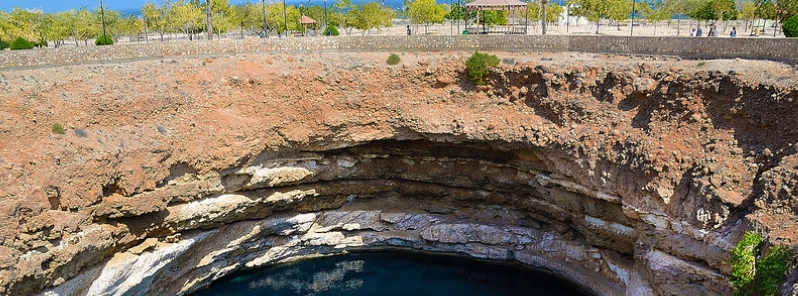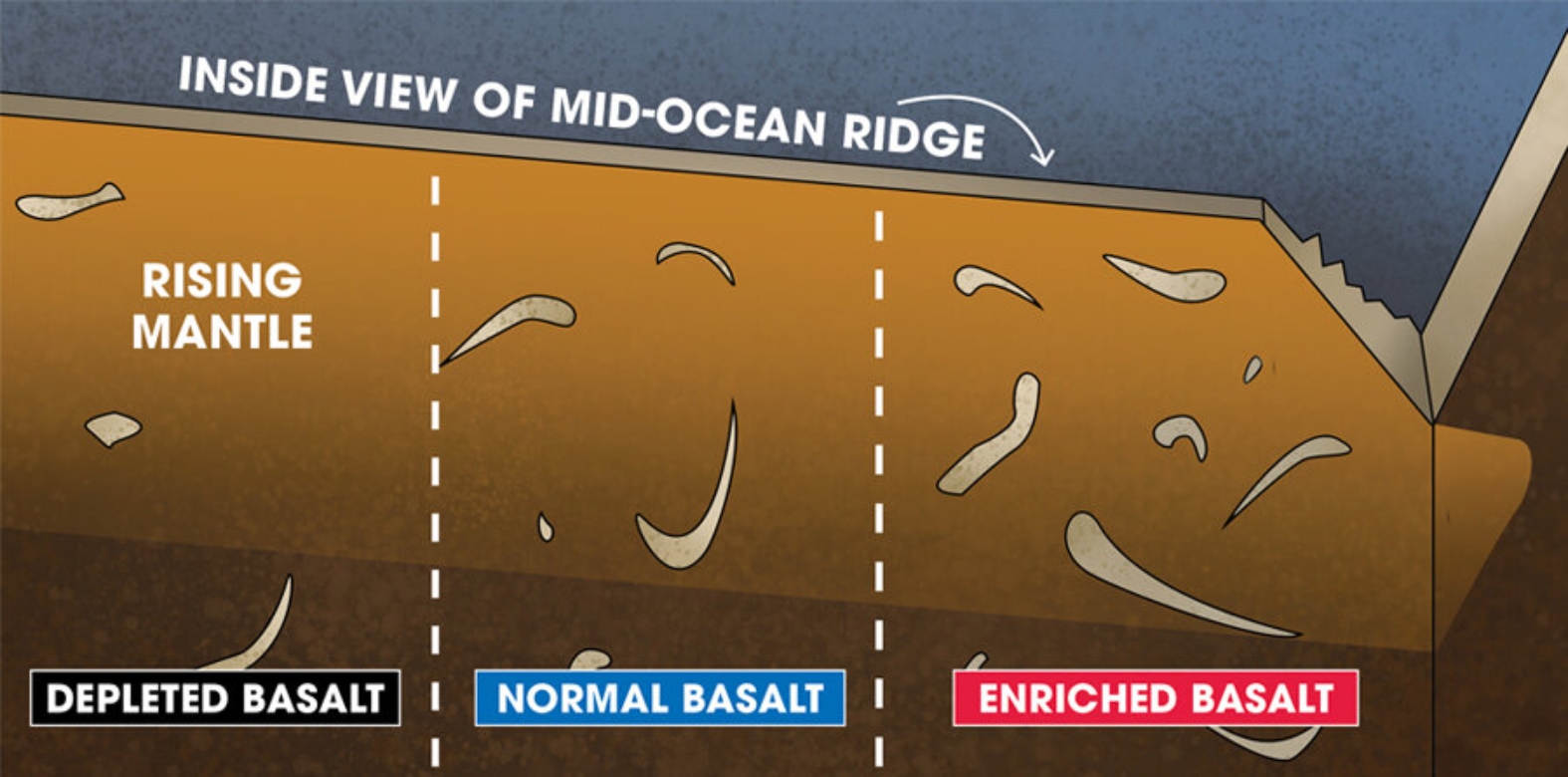MagLab geochemists solve mystery of Earth’s disappearing crust

A team of geochemists based at the Florida State University-headquartered National High Magnetic Field Laboratory has discovered significant clues about the sections of the crust that vanishes back into the Earth.
The researchers provided new evidence showing that while most of the Earth's crust is relatively new, a small percentage is made up of primitive chunks that had sunk long ago back into the mantle, then resurfaced later.
The team also found that based on the amount of the recycled crust, the planet has been whipping out crust constantly since its formation 4.5 billion years ago– contradicting existing theories.
"Like salmon returning to their spawning grounds, some oceanic crust returns to its breeding ground, the volcanic ridges where the fresh crust is born," co-author Muni Humayun explained, a MagLab geochemist and professor at Florida State's Department of Earth, Ocean and Atmospheric Science (EOAS).
"We used a new technique to show that this process is essentially a closed-loop and that recycled crust is distributed unevenly along ridges."
The crust is formed when mantle rock melts near cracks between tectonic plates along underwater volcanic ridges yielding basalt. As the new crust is produced, it pushes the older crust away from the ridge toward continents.
It eventually reaches subduction zones where it is forced under another plate and swallowed back into the Earth.
Scientists have long speculated about what happens to subducted crust after being reabsorbed into the hot and high-pressure environment of the mantle. They theorized it might sink deeper and settle there, or rise back to the surface in plumes. The new evidence supports the "marble cake" theory, and scientists had already seen clues backing it up.
Some enriched basalts or those collected from mid-ocean ridges have a higher percentage of particular elements that tend to seep from the mantle into the melt from which basalt is formed. Meanwhile, others called depleted basalts had lower levels.

Image credit: Caroline McNiel/National MagLab
The team chemically analyzed 500 samples of basalt collected from 30 ocean ridge regions– some were enriched or depleted.
Relative proportions of germanium and silicon were lower in melts of the recycled crust than in the basalt from the melted mantle, so the team devised a new technique that used that ratio to determine a certain chemical fingerprint for the subducted crust.
They came up with an accurate method of measuring that ratio using a mass spectrometer at the MagLab. At first, the analysis revealed nothing notable, so Humayun suggested that rather than comparing basalts of different regions, they could compare enriched and depleted basalts.
"I was very happy," said lead author Shuying Yang, who was thrilled to see clear differences among those groups of basalts.
The team had spotted lower germanium-to-silicon ratios in enriched basalts across the regions they sampled, pointing to its marble cake-like spread throughout the mantle– the team essentially solved the mystery of the disappearing crust.
"Sometimes you're looking too closely, with your nose in the data, and you can't see the patterns," Humayun said.
As the scientists dug deeper into the patterns, they unveiled more secrets. Based on the amounts of enriched basalts detected on global mid-ocean ridges, the group was able to measure that about five to six percent of the Earth's mantle is recycled crust.
Humayun added that their analysis suggests that "The rates of crust formation can't have been radically different from what they are today, which is not what anybody expected."
Reference
"Elemental constraints on the amount of recycled crust in the generation of mid-oceanic ridge basalts (MORBs)" – Yang, S. et al. – Science Advances – DOI: 10.1126/sciadv.aba2923
Abstract
Mid-oceanic ridge basalts (MORBs) are depleted in incompatible elements, but ridge segments far from mantle plumes frequently erupt chemically enriched MORBs (E-MORBs). Two major explanations of E-MORBs are that these basalts are generated by the melting of entrained recycled crust (pyroxenite) beneath ridges or by the melting of refertilized peridotites. These two hypotheses can be discriminated with compatible element abundances from Sc to Ge, here termed the ScGe elements. Here, we demonstrate that E-MORBs have systematically lower Ge/Si and Sc contents and slightly higher Fe/Mn and Nb/Ta ratios than depleted MORBs (D-MORBs) due to the mixing of low-degree pyroxenite melts. The Ge/Si ratio is a new tracer that effectively discriminates between melts derived from peridotite sources and melts derived from mixed pyroxenite-peridotite sources. These new data are used to estimate the distribution of pyroxenite in the mantle sources of global MORB segments.
Featured image credit: Dunstan/Flickr

Commenting rules and guidelines
We value the thoughts and opinions of our readers and welcome healthy discussions on our website. In order to maintain a respectful and positive community, we ask that all commenters follow these rules:
We reserve the right to remove any comments that violate these rules. By commenting on our website, you agree to abide by these guidelines. Thank you for helping to create a positive and welcoming environment for all.